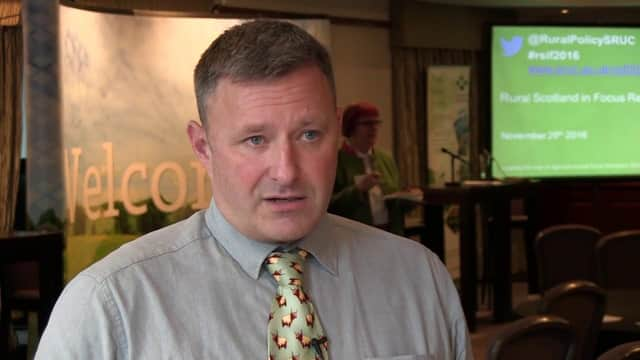Farming - The bank manager may want to know your carbon audit


But a leading economist has warned that they will soon be necessary to secure loans and credit from the financial investment sector as well.
Speaking at a meeting on new technologies in agriculture, senior agricultural economist and policy adviser with the SRUC, Steve Thomson said that the banking sector was under massive pressure to de-carbonise its investment and lending portfolios – across all sectors.
Advertisement
Hide AdAdvertisement
Hide AdAnd because of this he said that it was increasingly likely that banks would be looking at whole farm carbon footprints – and meticulous carbon audits of any areas where new business investment was planned.
Thomson added that this was one area in which farmers had to recognise the importance of having proper evidence in the form of hard data to verify any claims made for the climate change benefits of any new investment.
However, he also warned of the possible dangers to farmers who might be tempted to enter into the carbon trading market.
The economist said that if a farm had sold off carbon credits (possibly linked to the ownership of peatlands or woodlands), any benefits accruing from their climate positive role would not be included in any auditing process.
And, if traded, it would not be possible to offset the carbon savings from trees against other emissions such as methane from beef production.
And while it might seem unfair that multinational companies could pay to claim all the credits from such undertakings, he admitted that the market was an evolving area which needed to be better understood.
“Carbon offset markets have healthy tolerance levels built in and there needs to be thinking on how the farms can be credited with some of the offsetting rather than big finance claiming it all,” said Thomson.
The on-line meeting also highlighted recent advances in the area of virtual fencing, with Malcolm MacDonald from the SRUC’s Inverness office revealing that at least one application was now commercially available, while a handful of others were close to being launched onto the market.
Advertisement
Hide AdAdvertisement
Hide AdThe Norwegian Nofence system uses a GPS-connected unit hung around the cows’ neck to give an audible warning, followed by a ‘negative stimulus’, when a cow got close to the virtual fence line which had been set up on a computer.
MacDonald said that while at a cost of around £250 per animal plus subscription costs meant that the units were probably still too expensive for many to consider, unlike physical fences, prices were coming down.
“And while the units look to be quite hardy, we only time will tell how long they’ll last.
"Ten years and the investment could be worthwhile, only three or four then they would be expensive”.
Additional benefits of the technology could also be the ability to monitor health and to permit the use of ‘virtual gathering’ by re-setting field boundaries to draw cattle into pens.
Comments
Want to join the conversation? Please or to comment on this article.